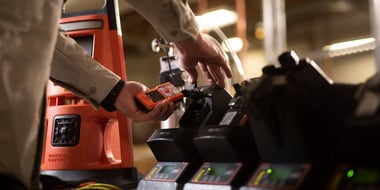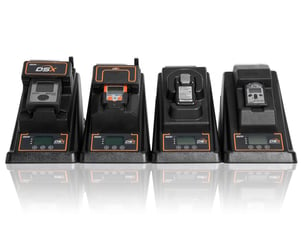Both chemical and wastewater treatment plants use a large variety of complex chemicals in their day-to-day operations. These chemicals may be used to control the pH of a solution, keep it from foaming, adjust its color, suspend a liquid or gas in a solution, stabilize a liquid, or help transform it into another product. Often these operations produce hazardous and toxic gases that can’t be detected using a traditional gas monitor with a dedicated electrochemical sensor. For example, there is not a dedicated sensor readily available for methylamine, like there is for sulfur dioxide or ammonia. However, vapors from methylamine can be detected with a photoionization detector (PID) sensor with a 10.6 eV lamp.
In fact, a PID sensor may be the only way to detect some chemicals. If an unknown compound gets discarded into a wastewater stream, the only way to detect its presence is with a PID sensor. Once its presence is confirmed using a PID sensor, then the task of trying to identify the compound can begin.

Traditionally, you needed a much larger sampling instrument with a PID sensor to detect volatile organic compounds (VOCs). Now, the Ventis® Pro5 Multi-Gas Monitor is available with a PID sensor that has a 10.6 eV lamp. With the addition of a new PID sensor, the Ventis Pro5 now allows you to rely on a connected, compact personal monitor that can easily be worn in the breathing zone to detect VOCs.
The Ventis Pro5 can also be configured as a pumped monitor for continuous sampling or with the Ventis Slide-on Pump for days where you will be switching between sampling and personal monitoring applications. For the ultimate flexibility, the Ventis Pro5 can now be configured using the new ultra-low power IR LEL sensor, long-life oxygen sensor, and carbon monoxide/hydrogen sulfide (COSH) sensor with the PID sensor to provide an instrument that can be used for both confined space entries and detection of dangerous VOCs. This configuration was previously only offered in Industrial Scientific’s MX6 iBrid® sampling monitor.
Choosing Between the Ventis Pro5 and MX6 iBrid for VOC Detection
So now that both the Ventis Pro5 and MX6 iBrid offer a 10.6 eV lamp PID sensor, when should you use the Ventis Pro5 and when should you use the MX6 iBrid?
Use the Ventis Pro5 when:
- You need a small and compact monitor to detect VOCs, particularly for single-sensor personal monitoring applications.
- You are looking for a connected monitor. Whether it be peer-to-peer communication, real-time communication via cellular or wi-fi, or real-time communication via an RGX® Gateway or TGX® (satellite) Gateway, the Ventis Pro5 offers a wide range of connectivity options so you can share real-time gas readings between monitors and to any phone, tablet, or computer.
- You will be switching between sampling for VOCs and needing a personal monitor for VOCs throughout your workday. The Ventis Pro5 monitor coupled with the Ventis Slide-on Pump allows for great flexibility.
Use the MX6 iBrid when:
- You need to detect both VOCs and combustibles using the same monitor and the combustibles will only be detected using a catalytic bead combustible sensor (i.e. acetylene or hydrogen – both cannot be detected using an IR LEL sensor).
- You require the use of a custom PID response factor. Both the MX6 iBrid and Ventis Pro5 come with a comprehensive response factor list. However, only the MX6 iBrid allows the user to enter a custom response factor.
- You require a PID sensor to detect benzene. The MX6 iBrid is still the detector of choice for benzene.




